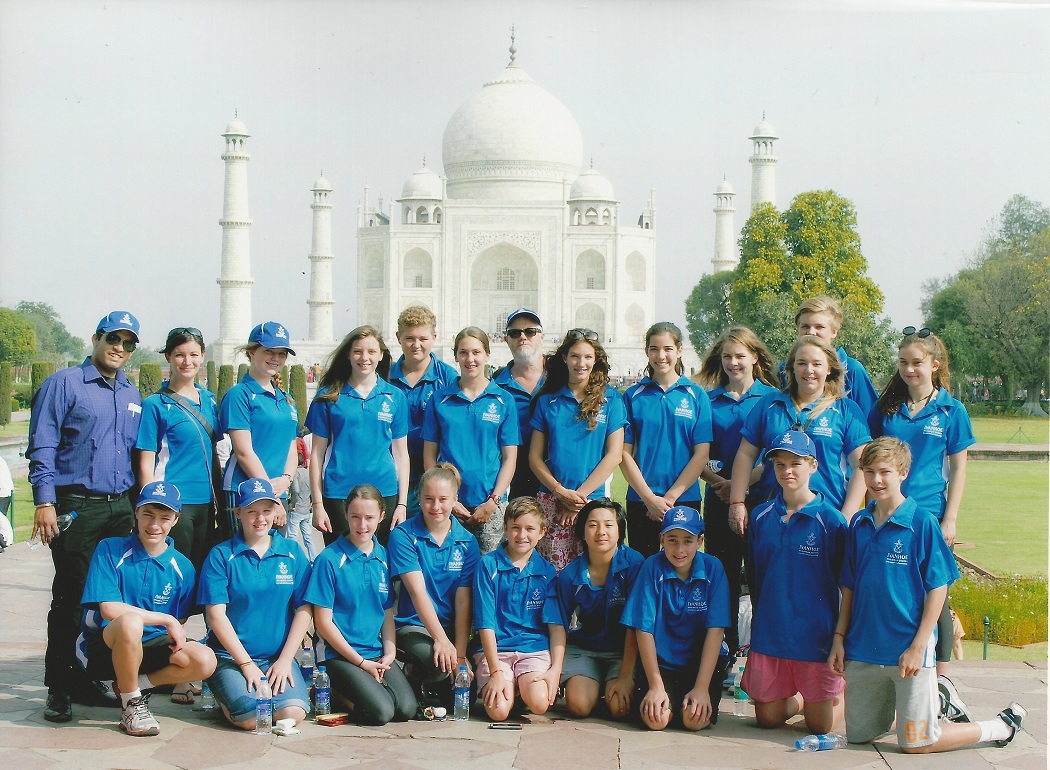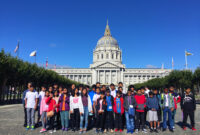Educational tours for adults offer a unique blend of learning and exploration, catering to diverse interests and learning styles. These experiences go beyond typical sightseeing, providing in-depth knowledge and engaging activities tailored to the mature learner. Whether you’re a history buff, an art enthusiast, or a science aficionado, educational tours provide a stimulating and enriching way to expand your horizons and connect with the world around you. They often incorporate interactive elements and hands-on activities, fostering a deeper understanding of the subject matter than traditional learning methods.
This guide delves into the key aspects of planning and executing successful educational tours for adults, from identifying your target audience and developing a compelling marketing strategy to managing logistics and assessing the effectiveness of your program. We’ll explore various tour formats, curriculum development techniques, and methods for maximizing participant engagement and satisfaction.
Defining the Target Audience for Adult Educational Tours
Understanding the diverse needs and motivations of adult learners is crucial for designing successful educational tours. Adult education is not a monolithic entity; it encompasses a wide spectrum of individuals with varying backgrounds, interests, and learning styles. Tailoring tours to specific segments of this market is key to maximizing engagement and satisfaction.
Diverse Interests and Learning Styles of Adult Learners
Adult learners bring a wealth of life experiences to the educational setting. Their learning styles are often shaped by their professions, hobbies, and personal preferences. Some prefer hands-on activities and experiential learning, while others thrive in more traditional lecture-based formats. Interests range from history and art to science, nature, and culinary arts, reflecting the broad range of human curiosity. Understanding these diverse preferences allows tour operators to craft experiences that resonate with specific groups. For example, a tour focusing on Renaissance art would appeal to history buffs and art enthusiasts, while a culinary tour would attract foodies and those interested in cultural immersion.
Segmentation of the Adult Learner Market
The adult learner market can be segmented based on several key demographic and psychographic factors.
Age
Age significantly influences learning styles and preferences. Younger adults (30-45) might prefer active, adventurous tours, while older adults (55+) might favor more relaxed itineraries with comfortable accommodations and less strenuous activities. For instance, a backpacking tour through Southeast Asia would likely attract younger adults, whereas a guided cruise through the Mediterranean might be more appealing to older adults.
Profession
Profession impacts both the time available for travel and the types of educational experiences that hold appeal. Educators might be drawn to tours with a strong academic focus, while business professionals might prefer tours that offer networking opportunities or insights into global markets. A tour focusing on sustainable agriculture would appeal to environmental professionals, whereas a tour exploring financial markets in London would be more relevant to those in the finance industry.
Interests
Interests are perhaps the most crucial factor in segmenting the market. Passionate bird watchers will be attracted to nature tours, history enthusiasts to historical sites, and photography enthusiasts to tours focused on capturing stunning landscapes. These niche interests allow for highly targeted marketing and the creation of specialized tours that cater to a specific audience’s desires. For example, a tour focused on ancient Mayan ruins would attract history buffs and archaeology enthusiasts.
Motivations Driving Participation in Educational Tours
Adults participate in educational tours for a variety of reasons.
Personal Enrichment
Many seek personal growth and intellectual stimulation, wanting to expand their knowledge and understanding of the world. This includes learning new skills, exploring different cultures, and broadening their perspectives.
Social Interaction
Educational tours provide opportunities for social interaction and networking, both with fellow participants and local communities. This aspect is particularly appealing to those seeking to connect with like-minded individuals or expand their social circles.
Stress Relief and Relaxation
For some, educational tours serve as a form of relaxation and escape from the daily grind. The opportunity to immerse oneself in a new environment and engage in stimulating activities can be a powerful stress reliever.
Adventure and Exploration
The desire for adventure and exploration is a significant motivator for many, driving them to seek out new experiences and challenge themselves.
Persona: A Typical Participant in an Adult Educational Tour
Let’s consider “Sarah,” a 42-year-old marketing professional with a passion for history and a moderate fitness level. Sarah is interested in learning more about the history of ancient Rome and enjoys active but not overly strenuous activities. She values cultural immersion and social interaction, preferring small group tours with a focus on authentic experiences. Sarah is motivated by personal enrichment and seeks a balance between learning and relaxation. She is willing to invest in a high-quality tour that provides a enriching and engaging experience.
Marketing and Promotion Strategies
Successfully attracting adult participants to educational tours requires a multi-faceted marketing approach that leverages both online and offline channels. A well-defined strategy will ensure your tours reach the target audience and generate sufficient interest to achieve optimal booking rates. This involves crafting compelling messaging, utilizing appropriate platforms, and tracking results to refine future campaigns.
Marketing Plan for Adult Educational Tours
A comprehensive marketing plan should begin with identifying key performance indicators (KPIs). These might include website traffic, social media engagement, booking conversions, and customer satisfaction scores. Once KPIs are established, the plan should detail specific marketing activities, including budget allocation, timelines, and responsible parties. For example, a campaign might focus on email marketing to a curated list of past participants, supplemented by targeted social media advertising on platforms frequented by the demographic. Regular monitoring and analysis of the KPIs will allow for adjustments to optimize the campaign’s effectiveness throughout its duration.
Social Media and Online Platforms for Promotion
Social media offers a powerful and cost-effective means of reaching potential participants. Platforms like Facebook, Instagram, and even TikTok can be used to share visually appealing content showcasing the tour’s highlights, including stunning locations, engaging activities, and expert guides. Online platforms such as TripAdvisor and Viator, which specialize in travel and tourism, provide established channels to reach a broader audience actively searching for educational travel experiences. Paid advertising on these platforms can significantly boost visibility and reach a more targeted demographic. For instance, a Facebook ad campaign could target individuals with interests in history, specific geographical locations, or educational travel, ensuring the message reaches the most receptive audience.
Compelling Tour Descriptions
Creating engaging tour descriptions is crucial for attracting potential participants. Descriptions should highlight unique selling points, such as expert-led insights, exclusive access to sites, or small group sizes fostering a more intimate experience. They should use strong action verbs and evocative language to paint a vivid picture of the tour experience. For instance, instead of simply stating “Visit historical sites,” a more compelling description might read, “Journey through time as we explore the captivating ruins of ancient civilizations, uncovering hidden stories and breathtaking vistas.” Including customer testimonials or reviews further builds trust and credibility.
Examples of Successful Marketing Campaigns
The success of educational tour marketing often lies in leveraging storytelling. For example, a tour operator specializing in historical tours might create a video series featuring historians discussing key events or artifacts. This approach not only generates interest but also positions the tour operator as a knowledgeable and trustworthy authority. Another successful strategy involves partnering with influencers or travel bloggers relevant to the tour’s theme. This collaboration extends reach and credibility through authentic endorsements. A tour focused on culinary experiences might partner with a food blogger to create sponsored content, showcasing the tour’s culinary highlights and engaging their audience. Analyzing case studies of successful campaigns provides valuable insights into effective strategies and helps inform future marketing efforts.
Logistics and Operations
Successfully executing an adult educational tour hinges on meticulous logistical planning and efficient on-site management. This involves coordinating numerous moving parts to ensure a smooth and enriching experience for participants. Careful consideration of transportation, accommodation, and catering, alongside proactive management of group dynamics and individual needs, are crucial for a positive outcome.
Transportation Planning and Management
Effective transportation planning is paramount. This includes selecting appropriate modes of transport based on the tour itinerary, group size, and budget. For example, a tour involving multiple destinations might necessitate a combination of chartered buses for intercity travel and local taxis or public transport for shorter distances. Pre-booking transportation is essential to secure availability, especially during peak seasons. Detailed itineraries with scheduled pick-up and drop-off times should be provided to participants well in advance. Contingency plans, such as alternative transportation arrangements in case of delays or breakdowns, should also be in place. Regular communication with drivers and transportation providers is necessary to ensure timely and efficient service.
Accommodation Arrangements
Securing suitable accommodation is another critical logistical aspect. The choice of accommodation depends on the tour’s budget, the desired level of comfort, and the participants’ preferences. Options range from budget-friendly hostels to upscale hotels. Group bookings often offer discounts and ensure that participants are accommodated in close proximity, fostering a sense of community. It is crucial to confirm booking details well in advance, ensuring that all participants have their accommodations assigned and that necessary amenities are available. Information about check-in/check-out procedures and contact details for the accommodation providers should be clearly communicated to the participants.
Meal Planning and Management
Providing appropriate meals is essential for maintaining participant energy levels and satisfaction throughout the tour. The meal plan should consider dietary restrictions and preferences. For instance, options for vegetarian, vegan, and allergy-friendly diets should be readily available. Pre-arranged meal plans, whether through pre-booked restaurants or catered meals, can ensure efficient service and cost control. It is important to communicate meal arrangements to participants in advance, including details about meal times, locations, and any dietary considerations.
Managing Group Dynamics and Participant Needs
Successfully managing group dynamics requires proactive planning and on-site management. This includes addressing potential conflicts, accommodating individual needs, and fostering a positive and inclusive atmosphere. Establishing clear communication channels and providing regular updates can help maintain participant engagement and address concerns promptly. Designated tour leaders or guides should be equipped to handle various situations, including medical emergencies or logistical challenges. Pre-tour questionnaires can help identify any special needs or preferences, allowing for proactive planning and customized support. Regular check-ins with participants throughout the tour can ensure that their needs are being met and that any issues are addressed promptly.
Pre-Tour Preparations and On-Site Management Checklist
A comprehensive checklist is essential for ensuring smooth pre-tour preparations and on-site management. This checklist should cover all aspects of the tour, from transportation and accommodation to emergency procedures and participant communication.
- Confirm all bookings (transportation, accommodation, activities, meals).
- Prepare detailed itineraries and share them with participants.
- Gather participant contact information and emergency contacts.
- Arrange for necessary permits and licenses.
- Pack emergency kits (first aid, medications).
- Prepare contingency plans for unforeseen circumstances.
- Brief tour leaders/guides on their roles and responsibilities.
- On-site: Monitor participant well-being and address any concerns.
- On-site: Maintain communication with participants and transportation providers.
- On-site: Ensure adherence to safety protocols and emergency procedures.
Assessing the Effectiveness of Educational Tours
Measuring the success of an adult educational tour goes beyond simply counting attendees. A truly effective assessment considers participant satisfaction, demonstrable learning, and the achievement of pre-defined tour objectives. This multifaceted approach allows for continuous improvement and ensures the tour delivers on its promise of a valuable and enriching experience.
Participant Satisfaction and Learning Outcomes Evaluation
Effective evaluation requires a combination of quantitative and qualitative data. Quantitative data, such as numerical scores on satisfaction surveys, provides a broad overview of participant sentiment. Qualitative data, gathered through open-ended feedback and observations, offers valuable insights into the nuances of the experience and identifies areas for improvement. For example, a post-tour survey might include a numerical rating scale for overall satisfaction alongside open-ended questions about specific aspects of the tour, such as the quality of the lectures, the engagement of the activities, or the clarity of the information provided. Analyzing both types of data paints a comprehensive picture of the tour’s impact.
Feedback Mechanisms for Gathering Participant Input
Several mechanisms effectively gather participant input. Post-tour surveys, both online and paper-based, are a common and efficient method for collecting quantitative and qualitative data. Online surveys offer easy distribution and analysis, while paper surveys can be useful in situations with limited internet access. Focus groups, involving smaller groups of participants in guided discussions, offer deeper insights into their experiences. Informal feedback sessions at the end of each day or during breaks provide opportunities for immediate response and address immediate concerns. Finally, email follow-ups a week or two after the tour concludes allow participants time for reflection and provide an additional avenue for feedback.
Measuring Tour Success Based on Defined Objectives
Measuring success hinges on pre-defined objectives. If the objective is to increase participants’ knowledge of a specific historical period, a post-tour knowledge test could be administered. If the goal is to foster a sense of community among participants, the assessment might focus on observations of group interactions and post-tour communication among participants. If the aim is to boost tourism to a particular region, success could be measured by tracking participant spending in the area or analyzing their social media posts mentioning the location. Setting clear, measurable objectives beforehand is crucial for accurate evaluation. For example, if a tour aims to increase participant knowledge of Renaissance art by 20%, a pre- and post-tour quiz could measure this.
Using Participant Feedback to Improve Future Tours
Participant feedback is invaluable for iterative improvement. Analyzing feedback from surveys, focus groups, and informal discussions can identify areas of strength and weakness. For instance, consistently positive feedback about a specific lecturer suggests a continued focus on that lecturer’s expertise. Conversely, negative feedback about tour logistics, such as transportation or accommodation, indicates a need for adjustments in those areas. Regular review of feedback allows for continuous refinement of the tour itinerary, content, and overall experience, ensuring the tour remains engaging and relevant to the target audience. For example, if many participants cite long travel times between sites as a negative, future iterations could reduce the number of sites visited or adjust the transportation methods.
Wrap-Up
In conclusion, crafting engaging and effective educational tours for adults requires careful planning, a deep understanding of the target audience, and a commitment to providing a high-quality learning experience. By combining compelling content, thoughtful logistics, and effective marketing, tour organizers can create memorable journeys that enrich the lives of participants and foster a lifelong love of learning. The success of these tours hinges on creating a dynamic and enriching environment that encourages exploration, fosters intellectual curiosity, and ultimately leaves a lasting impact on each participant.



